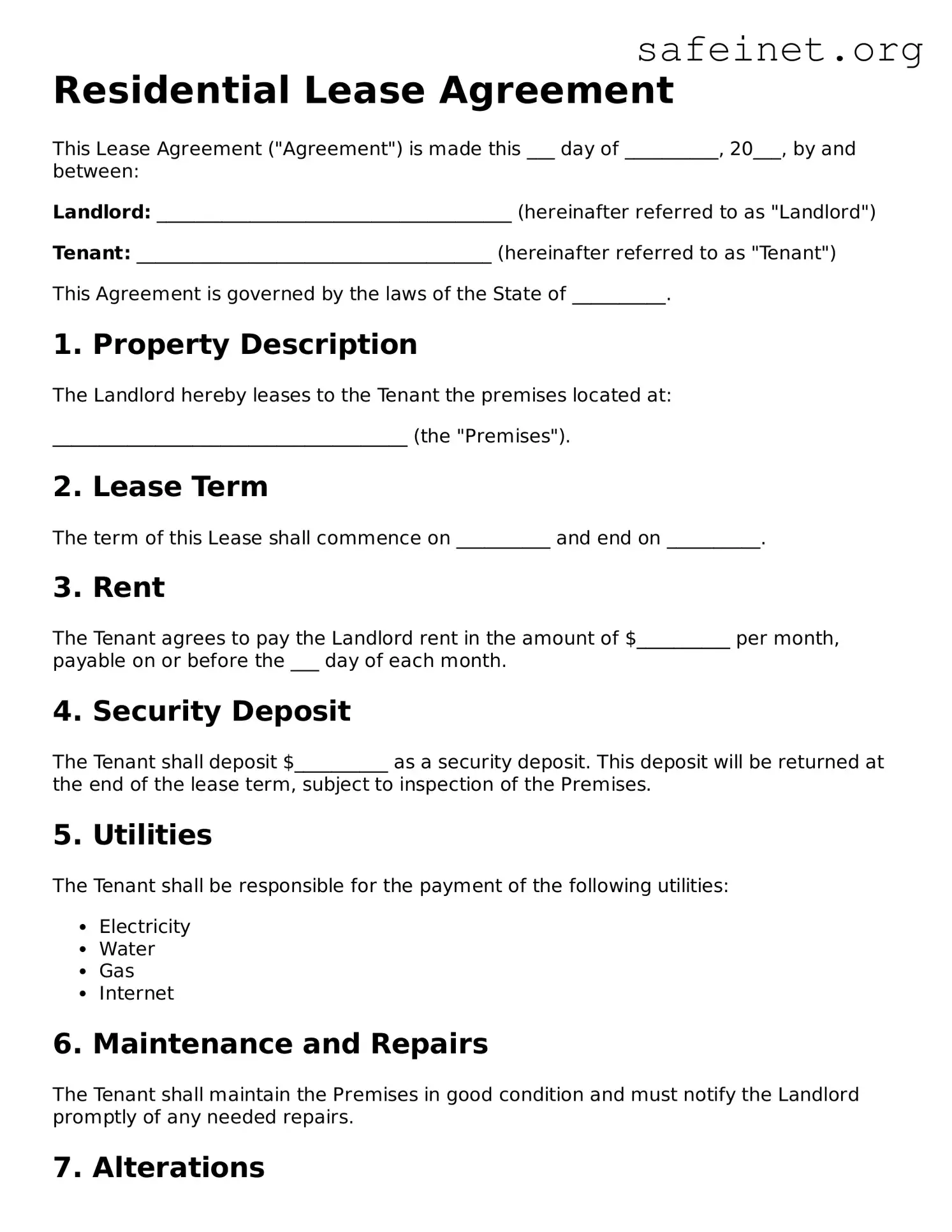Residential Lease Agreement
This Lease Agreement ("Agreement") is made this ___ day of __________, 20___, by and between:
Landlord: ______________________________________ (hereinafter referred to as "Landlord")
Tenant: ______________________________________ (hereinafter referred to as "Tenant")
This Agreement is governed by the laws of the State of __________.
1. Property Description
The Landlord hereby leases to the Tenant the premises located at:
______________________________________ (the "Premises").
2. Lease Term
The term of this Lease shall commence on __________ and end on __________.
3. Rent
The Tenant agrees to pay the Landlord rent in the amount of $__________ per month, payable on or before the ___ day of each month.
4. Security Deposit
The Tenant shall deposit $__________ as a security deposit. This deposit will be returned at the end of the lease term, subject to inspection of the Premises.
5. Utilities
The Tenant shall be responsible for the payment of the following utilities:
- Electricity
- Water
- Gas
- Internet
6. Maintenance and Repairs
The Tenant shall maintain the Premises in good condition and must notify the Landlord promptly of any needed repairs.
7. Alterations
The Tenant shall not make any alterations to the Premises without the written consent of the Landlord.
8. Termination
This Agreement may be terminated by either party upon providing a written notice of ___ days.
9. Governing Law
This Agreement shall be governed by and construed in accordance with the laws of the State of __________.
10. Signatures
IN WITNESS WHEREOF, the parties hereto have executed this Agreement as of the day and year first above written.
Landlord: ______________________________________
Date: __________________________________________
Tenant: ________________________________________
Date: __________________________________________
